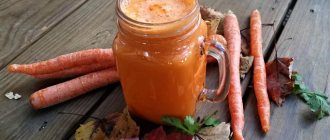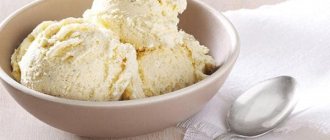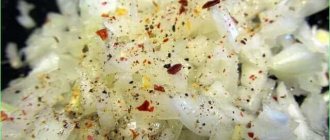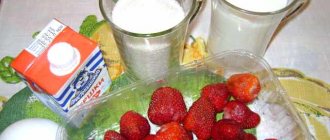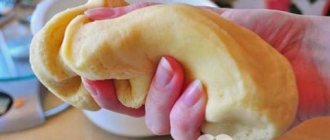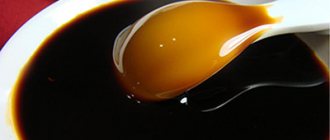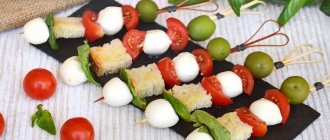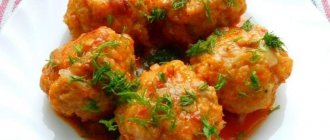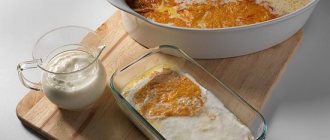Raw materials
Grape wine can be prepared at home from any variety you have, i.e. You can not only use dark and light varieties of berries, but also create compositions from them.
Homemade wine is usually prepared from grape varieties Platovsky, Kristall, Regent, Druzhba, Saperavi, Stepnyak, Festivalny, Rosinka, which have a fairly high percentage of sugar in the berries.
But much more often, wine is made from Isabella grapes, adding a little more sugar to it. The same applies to Lydia grapes.
Truly noble alcohol is obtained from special “wine” varieties - Isabella, Sauvignon or Sauvignon Blanc, Pinot Noir or Pinot Blanc, Chardonnay, Cabernet, Aligote, Merlot or Riesling.
The bunches must be collected manually, in the last days of September (or the first October) - before the first frosts hit. The weather should be dry - no rain or dampness. The bunches themselves are also not washed after harvesting. This preserves wild yeast on the surface of the wine berries, an essential component of fermentation.
The bunches are not stored after harvesting - the berries are immediately separated from the branches, discarding dry, moldy, rotten or unripe ones (they will produce excess acid). At most, if there are too many grapes, they can be sorted and sorted the next day after harvest. Berries, like bunches, are not washed.
In the fall, during harvest, the temperature outside and in the room where you will work with raw materials will be excellent. Therefore, when you bring in the bunches from the street, let them warm up and reach room temperature. If you start sorting through them right away, especially squeezing out the juice, then it may disappoint you - giving your wine not all the best that it has (and not in full). It’s not for nothing that they say at the winery that wine is alive, which means it reacts sensitively to the slightest manipulations with it.
Homemade wine from grapes without cucumber
Products:
- White grapes
Wine without tsukru: recipes and recipes
How to make homemade wine from grapes without cucumber:
- Puff up the selected berries and let them stand for 12-18 years in a cool place, and then filter and remove the pulp.
- Pour the juice into a bottle, close the lid and leave to ferment for 3 degrees at room temperature. Then pour the wine into a clean container, close it tightly and add another 3 degrees. After about an hour, pour the wine again into a clean container, seal it and leave it for another 1 month, then pour it again, having lifted the siege.
- If the wine becomes cloudy, place the container with it in a dark place at a temperature of 0°C to 6°C for a week, during which time the cloudiness will settle. Pour the finished wine into bowls and try or store in a glass.
Inventory and containers
Must be clean, or preferably sterile. To do this, you should wash them with soda and soak them in boiling water, and if impossible, scald them with boiling water. After this, all items are dried using sterile dry wipes or by natural drainage.
The material for winemaking “accessories” should be wood, glass, or, in extreme cases, food-grade plastic (plastic) or enamel containers (without chips), stainless steel, but in no case metal, which likes to react with the wine material at all stages of preparing the drink .
Tasting
It is carried out at almost all stages of preparation. Three constant indicators are assessed: color, aroma, taste. The final sample is not taken on an empty stomach. You should not drink other alcohol before this either.
Drink homemade grape wine chilled. Snacks are selected based on the strength and sweetness of the drink.
The optimal daily dose would be 100 ml of wine. This is the only way it will bring not only pleasure to your taste buds, but also benefits to your health.
Benefits of wine : saves from anemia and changes in blood pressure, removes radionuclides and rejuvenates the body.
Contraindications : intolerance to wine berries, medical restrictions (pregnancy, age, state of the nervous system and psyche, postoperative period, predisposition to alcoholism).
The range of wines is endless, but there are certain rules for their preparation that should not be ignored if you want to get good grape wine.
The technology for preparing white (rosé) and red wine has some differences, which we were kindly told about at one of the wineries (we do not name its name so that it would not be considered advertising). We will describe both technologies in great detail, and knowing the basis, you can easily add your own individual features to the recipe.
How to make plum wine at home?
I suggest watching the process of making plum wine with your own eyes in a video clip, so to speak visually. The author explains in detail how to prepare a delicious homemade drink.
Homemade wine is prepared without adding dyes or preservatives. It is completely natural. Its taste is also adjusted to suit the person who will drink it. This quality is difficult to find in the store, because now most brands of wine, including expensive ones, add a preservative - sulfur dioxide. In addition, the process of making your own wine is very exciting.
So if you drink strong drinks, then homemade is better!
Red wine recipe
This wine is usually prepared from blue grapes, which are sometimes also called black, or from a combination of varieties with a predominance of dark shades of berries.
Let us note right away that the process of preparing any red wine will be identical to the one below, regardless of the amount of grapes and granulated sugar indicated in the list of ingredients.
Prepare:
- blue or black grapes (berries) – 10 kilos
- granulated sugar – 50-200 gr. for every liter of juice obtained
How to prepare wine from blue grapes:
- Working with raw materials:
Having sorted the grapes and leaving only healthy and ripe berries, we begin to knead them. Mash so that each berry is crushed. This is best done in small batches by hand.
We advise you to wear rubber gloves before starting the process - grape juice not only stains the skin, but also irritates it due to the presence of acids in it. Plus, this will protect the juice from microorganisms and particles of the stratum corneum from your skin getting into it.
An alternative for kneading berries can be a wooden or rubber (silicone) rolling pin, which, like your hands, will not crush a single seed.
The container in which the mashed grapes will end up should be filled with no more than 2/3 or 3/4 of its volume. Next, it is covered with gauze and placed in a darkened room with a temperature fluctuation of 22-24°C. Here the fermentation of the juice should begin, and the pulp (skins, pulp, part of the seeds) will float to the surface in a dense “cap”. This “hat” needs to be broken daily.
If fermentation of the wort is not active, or does not occur, it is worth adding starter from grapes or raisins, or wine yeast (according to the instructions included with them). Sometimes just adding a handful of raisins is enough. After this you need to wait a few more days.
- Working with juice:
After 3-4 days, carefully remove the “cap” of the pulp from the wort (juice) and squeeze it out, and filter the remaining wort in the container (you can do it twice).
At this stage it is possible to add water to the wort. This causes the juice to be highly acidic.
The optimal acidity for winemaking is 6-7 grams of acid per liter of juice. If the acid content is higher than this value, add water to the wine until this value is obtained. However, there are two “buts” here.
Firstly, few people have a device for measuring acidity, and tables indicating acid content are very approximate, since the same grape variety has its own acidity in different regions.
Secondly, sugar added to wine reduces its acidity, just like fermentation itself.
Therefore, we will determine the acidity of the juice by taste - if it is so sour that your eyes widen, pour water into it, but not more than 100 ml per 1 liter of wort (juice).
In factory conditions, no water is added to the wort at all.
In addition to water, the first portion of granulated sugar is added to the wort at this stage - 50 grams for each liter of wort (or 1/3 of its volume if you use another recipe indicating the full volume of sugar in the list of ingredients).
Next, the fermentation tank/containers are filled with wort (2/3 or 3/4 of the total volume). These can be bottles or 3-liter jars. A water seal (water seal, fermentation tongue) or a glove purchased at a pharmacy must be installed on top of the neck of the container. If using the latter, make a puncture on one of its fingers with a regular sewing needle.
- Active fermentation stage:
We place the bottle with a water seal in the same dark and warm (t=22-25°C) room. It is important that there are no sharp temperature fluctuations above 30°C below 15°C - this will kill the yeast, stop the process and spoil your grape wine.
We decide on the sweetness and strength of the wine. To do this, you should know that the strength of wine increases by 1% when adding 20 g of sugar per liter of grape must (juice). Thus, to get a wine with a strength of 11%, you need to add 220 grams of sugar per 1 liter of grape must. But the must already contains the sugars of the grapes themselves, so less of it needs to be added.
But it is worth considering that the wine will not gain more than 14% alcohol without adding strong 40% alcohol. Typically, unfortified homemade blue wine reaches 12%. This is due to the fact that the yeast in wine stops working (die) at an alcohol concentration above 12-14%.
For information: wine yeast from the store dies only when the alcohol level in the drink exceeds 17-18%, and sherry yeast Saccharomyces beticus - when the alcohol concentration is above 24%.
Without added sugar, unfortified grape wine will reach a maximum of 10%, since the natural sugar content of grapes in central Russia and Belarus is approximately 20%. But there are also more sour varieties.
The exact sugar content in the wort (juice) is only possible using a hydrometer. Their content is considered optimal within the range of 15-20%. That is why sugar must be added to the wort gradually, in several stages.
After 3-4 days, a second portion of sugar is added to the wort - again 50 grams per 1 liter (or another third), but you cannot just pour it into the bottle. To introduce sugar correctly, you will need to pour a little wort (0.5 liters - 1 liter) into a sterile small container, add the required amount of sugar and dissolve it with thorough stirring. Only after this is the sweet liquid poured back into the bottle (under the water seal).
After another 5-6 days, add the last portion of granulated sugar - again 50 grams per 1 liter (or its last third). Sugar, as in the previous case, is dissolved in part of the wort and poured back into the bottle.
It is important that all the sugar is fermented with each addition.
Typically, active fermentation ends between 21 and 40 days. If the wort ferments for more than 50 days, it must be separated from the sediment, poured into a new, sterilized container and a water seal must be installed.
If, on the contrary, the signs of fermentation disappeared early - on days 5-7, then this may mean:
- Depressurization of the container (carbon dioxide escapes through the gap formed in the container). You need to check and close the fermentation container tightly.
- The sugar concentration in the wort exceeded 10-20%, i.e. it turned into a preservative and stopped the yeast from working. You need to add water or fresh juice in a volume of 20-150 ml per liter of wort.
- Low vital activity of wild yeast or their death. You need to add starter, or 7 crushed (not washed!) grapes per 10 liters. wort, or 40 gr. unwashed raisins (loose, not in bags) per 5 liters. wort, or introduce wine yeast, according to the instructions attached to it.
- The alcohol content in the must reached 14% and fermentation was completed, the yeast died (as evidenced by the clarity of the wine and a layer of sediment).
- Working with young wine:
When the wine from the grapes no longer shows signs of fermentation (the water seal does not gurgle, the glove has fallen, a stable sediment has fallen, transparency has appeared), it must be separated from the sediment without disturbing its layer. The reason for such delicate handling of wine sediment is, firstly, the desire for transparency of the drink, and secondly, the eradication of its possible bitterness and the preservation of aroma.
To carefully pour grape wine at home, the container with it must be raised above the floor a few days before this process (if it is on the floor), wait 3-4 days and pour the drink into a dry, sterile container through a rubber hose, which can be taken from pharmacy dropper, or siphon (transparent soft tube).
One end of the tube should be dipped into the wine, the other should be pressed between your lips and the liquid should be slightly pulled towards you (as if you were drinking a cocktail). But you shouldn’t wait until the wine gets into your mouth: as soon as you notice the liquid moving in your direction, immediately insert the second end of the straw into an empty container (bottle/jar).
So, your alcohol will slowly leave the old container and fill the new one. At the same time, do not be greedy - do not lower the tube closer than 2-3 cm to the sediment.
But even despite all the measures taken, wine from black grapes will not immediately become transparent. This issue will be resolved at its further stages.
- Adjusting sweetness and strength:
The young grape wine is already ready, but to make it perfect, only the final steps remain to be taken.
First, let's determine the sweetness of the drink: at this stage, you can turn your wine from table wine into dessert wine and even liqueur wine - like Cahors. To do this, you need to try it and determine how sweet it is at the moment (you may not have to change anything). If you are unhappy and the wine seems sour to you, then you need to sweeten it.
This is done using strong sugar syrup with a minimum amount of water: up to 800 grams are dissolved in 200 ml of water. granulated sugar, let it boil for about 5 minutes, cool and add to the wine at the rate of 40 - 60 ml per 1 liter of young wine.
You can do it simpler: dilute the sugar in a small amount of wine (0.5 liters - 1 liter) until completely dissolved and pour it into a container with the rest of the wine.
Adding sugar at the last minute can restart fermentation. There are several ways to solve this problem:
A) in the first 10-15 days (longer is possible), there should be a water seal on the ripening container
B) the sweetened wine is pasteurized: the bottles are filled with the drink so that there is an air gap of about 2 cm between the cork and the drink. The cork is tied to the neck with twine and the bottles are heated in water at a temperature of 65°C for 20 minutes. After this, the cork is untied.
Pasteurization can be considered highly desirable for young wine. Pasteurized wine stores better and has a brighter taste and aroma. In addition, this wine matures much faster.
It is worth noting that the lower the pH of the drink, the more effective the pasteurization. The above temperature of 65°C is very relevant for wines with low acidity and degree. For fortified and high-acid wines, heating bottles to 55°C is considered sufficient.
Wine can be pasteurized in other ways, for example, by heating bottles in water to a temperature of 88°C. The procedure lasts 20 seconds, during which the wine should not heat above 90-93°C (its boiling point). In addition, wine in a large container can be heated to 45 - 55 ° C and then, hot, bottled. However, the last two methods are rarely used, because in the first case there is a high probability of the wine boiling (and therefore dying), in the second - the drink releases a degree when heated, which means the wine will be very light.
C) adding a degree - homemade grape wine can be not only light, but also fortified. To do this, you need to add strong, 40-degree alcohol to it. It can be like vodka, alcohol diluted with water or cognac. We pour strong alcohol into wine not as we please, but at the rate of 20-150 ml per 1 liter of finished young wine.
Increasing the alcohol content of wine above 14% will stop the fermentation process. Moreover, strong wine lasts longer and better.
True, not everyone likes its taste - many ladies claim that it is harsh compared to unfortified and less aromatic. Although all this is a matter of taste.
The adjusted drink is poured into a sterile container/containers, sealed and sent for maturation.
If you have an accidental emergency and after adding sugar the wine turns out to be too sweet, then you can:
- add filtered (!) water to it
- add strong (40% alcohol) to it
- make a blend with another wine
- resume fermentation by adding raisin starter (described in the white wine recipe)
- Maturation:
This stage is also called the period of quiet fermentation. It lasts from a month to a year - there is no point in aging the wine further - its taste and aroma do not improve. For red wine, the optimal period of aging is 2–3 months.
During this period, the drink reaches the peak of its taste and aroma capabilities. To do this, we need to create the necessary temperature regime for it at 5-16°C (not higher).
You also need to prepare another clean container, which will be sterilized before use. We will pour the wine into it, separating it from the sediment that falls. Transferring from container to container should be carried out approximately every 20 days.
Each time the wine becomes clearer. But if even at the end of the ripening period it remains somewhat cloudy, then you can use methods of artificially brightening it. There are special preparations for this that can be purchased in stores for winemakers. Wine can also be clarified using gelatin or egg white. It is worth knowing that clarified and unclarified wine have exactly the same taste.
In the case where the wine was pasteurized, it is drained from the sediment in the same way, before the ripening period expires.
When sediment no longer forms in the alcohol, it is sealed in bottles and sent for storage.
Sometimes, before pouring the wine, it is recommended to treat it with cold. Such wines have an improved taste, rarely get sick, and tartrate and iron salts are deposited in them. To carry out cold treatment, you need to keep the drink for 1-2 weeks at a temperature close to freezing, i.e. at approximately -1 to -2°C. Next, the wine is filtered (separated), i.e. passing through a flexible hose, without collecting the bottom sediment.
Now the drink is ideal for bottling.
- Wine storage:
In a cool place with a temperature of 5 to 12°C in clean (or better yet, sterilized) glass bottles of 0.5 or 0.7 liters. at a slight angle, so that the wine lightly touches the cork (this will protect it from drying out and air getting inside the bottle).
Storage containers made of dark glass are preferable. It is washed with a brush, doused with boiling water and allowed to drain. Sterilization is possible in the oven at 150°C for 15-20 minutes (after the bottles are completely dry).
The corks for capping are boiled in boiling water, dried and used immediately.
The shelf life of unfortified wine, subject to temperature conditions, is 5 years; fortified wine can be stored even up to 10 years.
If you begin to notice signs of souring in the finished wine (after opening it), the drink can still be saved within 3-5 days - you need to pasteurize it (the process is described in great detail above). If you didn’t have time, don’t worry – such a drink can easily turn into wine vinegar, which is necessary in the kitchen.
Forum statistics
197527 Messages in 1615 Topics from 5301 Users. Latest user: Tatyana Lyubchenko Latest message: “Help in identifying pain...” ( Today at 08:21:54) Latest messages on the forum.
Now on the forum
40 Guests, 15 Users
Users in the last 15 minutes: Vyacheslav03, Marina Protasova, Yuri45, hanter64, mers, lomakin1969, Natasha, y_fed, eSAa, VitalySD, Cherkessk, Romanov, vodyanoy, vasily1111, Alexander Mogilovsky [Blocked] [Section Moderator] [Forum Moderator]
Maximum online today: 69 . Maximum online for all time: 2758 (28 July 2020, 17:22:51)
Users who visited the forum in the last 24 hours
Total: 256
(Visible: 255, Hidden: 1) 1963, Vyacheslav03, Marina Protasova, Yuri45, hanter64, mers, Natasha, y_fed, lomakin1969, eSAa, VitalySD, Cherkessk, Romanov, vodyanoy, vasily1111, Alexander Mogilovsky, nadya, Accipiter26, Zaur, Sergei Vasilevi4, therapist, Alex65, DorontsovPeter, SANYCH, Alexander_89, Dmitry Anatolyevich, Alexander Kharitonov, Dmitry-Ivanovich, DimaRostov, Valentina Ivanovna, Yagodka, kvg, kdm57, Pioneer, Volgar, Andrey 83, Shved, Ivan Levin, Keys, Belgorodets, Roman Shevelev, bagdad, vlad51, Mikhail Alekseevich, Ilya 77, Sergeevich, Goodwil, Maximilian, STALNOFF 48, Valentina Zinchenko, igor222, Den, Alexey Agryzkov, Evgen_Ev, Capricorn, VeraNiK, Evgeniy52, Eduard., filipp-alex, lira, chegevova, Slyd, niskifss, Mikhail77, Evgeniy 163, Tatyana Kitaeva, N.A. Sokolov, earring !977, Buba, bryanskiyy, Leonty Yarygin, Alexander K, Alexey V, Elvira2017, Quiet, 25nata35, Marshal, LenaMina, Vise, Natasha N, Lidia58, Leonidych, Cheprak, Nadezhda Egorova, fuad, Tatyana B, Elena Z, kosmos, RyzhakAnanyev, skier, Alex_T, Valery Rastorguev, Skif, Alexander Vl., Spartak, Liza, Natali, PMV, Dmitry 77, Sergey Yuryev, Igor Viktorovich , Sergey Chistokletov, Vladimir-kanevskaya, mystic69, pumaxim, Sergey 1965, Oleg56, Victor_S, Lolita, Amber7394, vitos, Sergey Tashchiyan, Alexander 65, makrela, Roman Fedorovich, Galinka, DSW, Igor Sergeevich, Alexander150, MaxL, Sergey 61, Svetla777, Nurtas, Vika, Aleksei, Taker, Alexander48, nadia, Organism, Polyanina Ekaterina, Andrey Gladilin, Iglika, max2008-01, Igor K, Mikhail1958, Timofey, Vladimir Berdnikov, Helga, Vasily V., Sergey Ko, Andrey76, diplight , Koloman, Akhmed, maxbul, alexsandr, Seryozha 64, irin0202, , Sery, Igor F., Sergey2017, VLADIMIR7512, Eduard58, dayton, Vadim, gheo55, VladimirD, AlexsandrP, Konstanna, Mikhno Alexander, Sasha57, Igor M., Grandfather Young , Niku, Boris Sokolyansky, Victor B, Igor 31, ketch, Pitko, rivaN, asun16, MoyaPrelest, Mark, Chiganak, Lisav, oleg9f, Denisovich, ama779, Evgeniy 50, Kryn, Bublichenko Alexander M, serginio, AndSanych, Sa-shura , Lyudmila, gardener, nik_repei, LOZA, Mikhail_ 72, Yuri Semyonov, vilguelm, Dmitry2018, bursucok, Vladimir Buturlakin, Chapai, Alexander Sh, Sergey777, Vladimir Kovba, aladu6ek, Alexander Sedunov, Raisa Yurievna, Galina Gorodilova, Alexander1212, Erem, Scream 1355 , Andrey Beribesov, Vladimir Kostochkin, AlexanderD, Rafail, 64nikolay64, Anatoly Sivkov, zeml, irahelm, Ivanko, ArchangelMichail, thanatos, zsb, Vasily 53, Sergey43, romabcm, Efimych, nik260, Grinya, Barbarian, Sergey Fomin, ichtiandr, viktor_, Tatyana Lyubchenko, Irina Kurskaya, Inna161, Yuri72, turist792, Alexander Gai, Nadymchanka, uzeir, YATTYANA, ALEX, Korneich, Snezhinets, Vyacheslav³¹, Helidonium, Izhitsa, cecet71, Realist, Alexander71, alexss, vladimirvrn, marlin64, Rita, TIS, sergey -11, Evgen, Alik, Alexander-ask-34
White (rosé) wine recipe
The secret of this drink is that this wine is made from white grapes. Well, or pink. Green grapes are also suitable for making wine, but only “green” - in the sense of variety, not ripeness. Any grapes used in winemaking must be ripe.
The assertion of Internet sites that to obtain white wines you need to use red grapes without skins was not confirmed either in our practice or at the wine factory.
In the process of making white wine, your white grapes will go through almost all the steps that red grapes go through. Therefore, here we will describe in detail only the differences in the technological process.
Prepare:
- white or pink grapes (berries) – 10 kilos
- granulated sugar – 50-200 gr. for every liter of juice obtained
- sourdough or wine yeast
How to prepare wine:
- Working with raw materials
As in the previous case, the grapes are sorted and, without exposing them to water (without washing), thoroughly knead every single berry. This is very important, because to prepare white wine we will need to completely squeeze the juice out of the berries and filter it immediately after pressing.
Fresh fruit notes in the drink and its better fermentation in the future will be ensured if you do not squeeze the juice immediately after pressing the berries, but let it brew together with the skins and pulp for about 10 hours. Now the juice will be ready to bring a brighter taste and aromatic bouquet to the wine.
- Working with juice - active fermentation
Unlike red wine, white must (juice) has much less wild yeast, therefore, in order for wine from grape juice to ferment into the must (juice), you need to add starter or wine yeast (according to the instructions included with it). Sourdough is prepared from grapes with skins or raisins. It is worth knowing that yeast or starter is not added to the wort at once, but in several stages over 6 hours (so as not to destroy the yeast during a sharp temperature change in its habitat).
To prepare raisin starter (for 10 liters of wort) you need 200 grams. raisins, pour 300 ml of warm (not hot) water, add 50 g. granulated sugar and stir. Cover the top of the dish with a cloth (gauze will do) and keep it for several days (3-4) at a temperature of 25°C. Now it is ready to be introduced into the wort.
No water is added to the must of white grapes at all - white (pink) grapes usually have higher sugar content than their dark relatives and lower acidity.
At this stage, we add the first portion of granulated sugar - 50 grams for each liter of wort (or 1/3 of the total amount of sugar that is planned to be added).
After this, the container in which the wine will ferment is filled with wort. We fill it 2/3 or 3/4 of the entire volume and install a water seal (or a rubber glove with a puncture in one of its fingers).
Wine should ferment in the dark, but the temperature for fermenting juice from white grapes should be lower than for red ones. At home it is 10 - 22°C, in factories it is strictly 16°C. The temperature cannot be lowered below this limit, but it is not advisable to raise it higher either. The thing is that it is precisely this temperature that ensures the maximum aroma of the drink and protects it from oxidation.
In a factory, the wort ferments for 7-10 days; at home, this period can last for a month.
- Working with young wine, maturing and storage
The young wine produced after the wort has completely fermented must be tasted and its sweetness and strength adjusted. This is done in the same way as in the case of red wine. The maturation and storage of the drink are carried out in the same way as described above. The only difference is in the ripening time: in order for the white wine to be ready and fully ripe, it will be enough to keep it for 40 days (not forgetting to drain it from the sediment).
The variety of grape wines is achieved using various recipes, which are based on the above, as well as blends of grape juices before fermentation, or wines during the ripening process (blending juices is preferable).
If you decide to experiment and want to create a new drink - your “family” wine, then don’t be afraid - go for it. However, try to ensure that the initial volumes of your sample wines do not exceed 3 liters.
Cooking options
- Do not filter the pulp in red wine for 21 days. Only after this do we filter the drink, add sugar, and install a water seal.
- In the recipe for table grape wine “Polish style” for 5 kilograms of grape berries, we take 4 kilograms of raisins and, while maintaining all stages of production, make a wine in which we use raisins instead of sugar.
- During fermentation, a sterile (boiled and ironed on both sides with a hot iron) linen bag is lowered into a container with juice, into which spices are added to taste. This can include lightly crushed cloves, sage seeds and chopped pieces of nutmeg.
- Schisandra jam (more precisely, its syrup) will also help to diversify the taste of the drink: before putting the wine to ripening, you can add 1 tablespoon (if desired, a teaspoon) of this syrup into its composition (per 0.5 l). After 3 months you can start tasting.
- You can age the wine at its final stage on oak pegs. They are soaked and dried in the oven in advance (for 24 hours), and then dipped in containers with wine. After a month or two of such aging, the wine will give you caramel notes of cognac.
Wine from table grape varieties - White Beauty, Delight, Kesha, etc. – you can cook them, although they are originally intended to be eaten fresh. The berries of these varieties are more fleshy, they yield much less juice, and their sugar content is low (most often 13-17%). But in general, using the technologies described above and from these grape varieties, you can create an excellent product. The Vostorg variety is especially promising here - it is juicier, and its sugar content reaches 23%.
Wine made from grape juice with honey
For it you will need:
- grape juice and water - 5 liters each
- natural honey – 1.5 kg
- wine yeast or 250g raisin starter.
It is prepared using white wine technology: juice and water are combined, 1/3 of honey (instead of sugar) and starter are added, fermented under a water seal, drained from the sediment, sent to ripen (the detailed technology is described above). Ice wine made from frozen grapes or ice wine has its own peculiarity - the berries must freeze directly in the clusters on the branches. And not even freeze, but freeze.
The grapes can be either white or dark, but it is better if they are noble varieties. It is collected in the morning, usually in November - December. When cutting, the berries should not defrost.
This drink is usually not made at home, but you can still try it. We press the frozen berries - as many as we have collected - without defrosting them, wait until the resulting juice reaches a temperature of 10-12°C and add sugar and special SB wine yeast, which can work at such low temperatures.
We add the amount of sugar using the usual technology - in parts of 50 grams. per liter of juice, yeast - according to the instructions included with it.
The “ice” wort will ferment in a cool room for a long time - several months, it turns out light - 9-10% in alcohol content. It is poured through a hose into a clean, sterile container, sealed and sent for storage. Store only in a cool and dark place, after opening the bottle - no more than 3 days.
wine from grape leaves , and some craftsmen offer recipes for this miracle - alcohol. However, despite all the benefits of the grape leaf, we recommend that you make wine only from its berries, and if you really want to somehow use all the grape raw materials, then make a better tincture, rather than wine from grape leaves. Its description can be found in the article “Grape tincture.”
The issue with the pulp remaining after pressing the wine is resolved. It can be used either for making chacha (which is discussed in another article) or for making secondary wine. At the same time, many people like wine made from grape pulp even more than wine made from grape juice.
Homemade wine from pitted plums
This is the simplest recipe that can be repeated at home, without special equipment. You don't even need a juicer. You can make wine exclusively from plums, or you can add a few other fruits. They will introduce a new note of aroma and taste into the bouquet of wine. The proportions do not change depending on the composition. It is important that the drain is 70% or more.
Compound:
- plums (or plums + other fruits) – 5 kg;
- sugar – 1-1.5 kg (depending on the sweetness of the plum);
- drinking water – 5 l.
Cooking process:
1. Plums, some apples and pears should be thoroughly washed and peeled. As already mentioned, only high-quality raw materials are suitable for good wine. Any wormhole or rotten spot will begin to deteriorate further, rather than ferment and convert sugar into alcohol.
2. Remove seeds from plums and core from apples. If there are any defects on the fruits, they must be trimmed.
3. Place the fruits in a suitable clean container (it should not be corroded; an enamel, glass or plastic container will do), add water and add sugar. The more sugar, the stronger the drink will be. If the plums are sweet, honey-like, add 200-250 g. sugar per 1 kg of fruit will produce a light wine at about 7 degrees. If you find it difficult to choose, it is better to add 250-300 grams. sugar so that there is definitely enough for fermentation.
4. Cover the pan with a lid and leave in a warm place for 5-7 days; once a day, stir the contents with a wooden or plastic spoon. After this, the fruit mixture must be strained until transparent. You can do this in two stages: first through a colander, then through several layers of gauze. Pour the future drink into the bottle and install a water seal using a glove (with several punctures on the fingers) or a membrane with a medical dropper.
The wine matures for about 3-4 months in a cool place (at a temperature of about 20 degrees). During this time, it will need to be removed from the sediment twice in any convenient way. The finished product should be stored in a cool, dark place.


